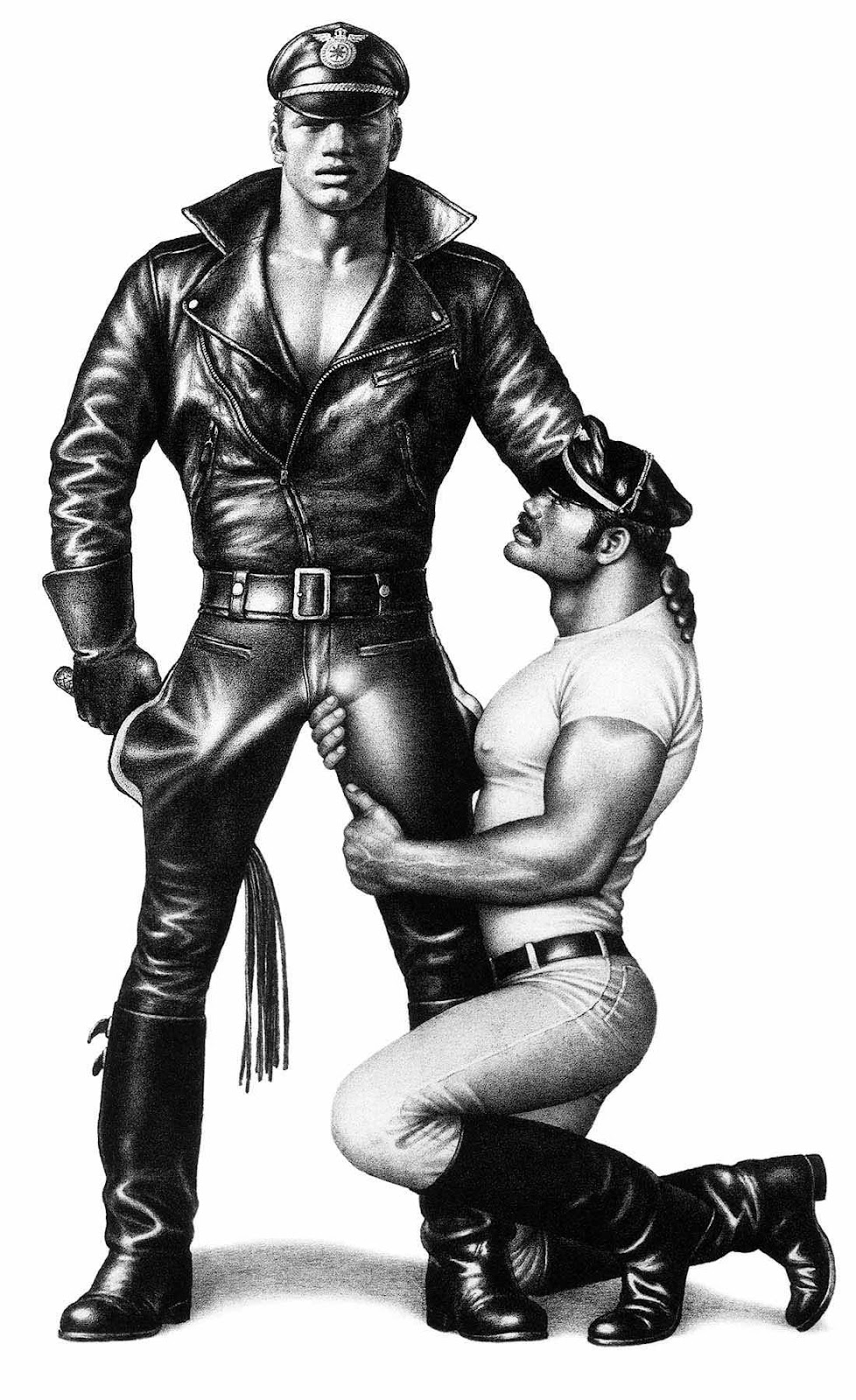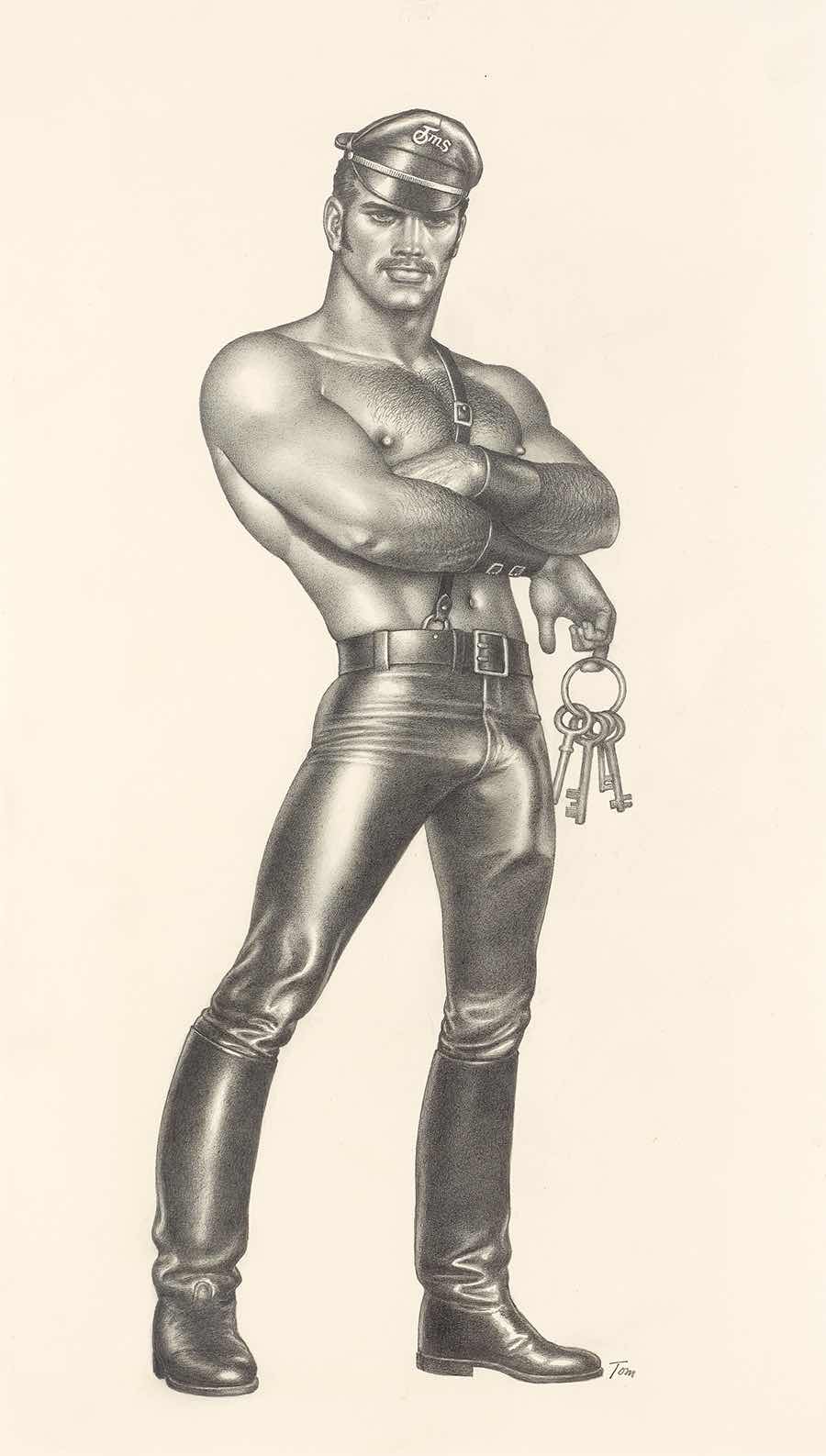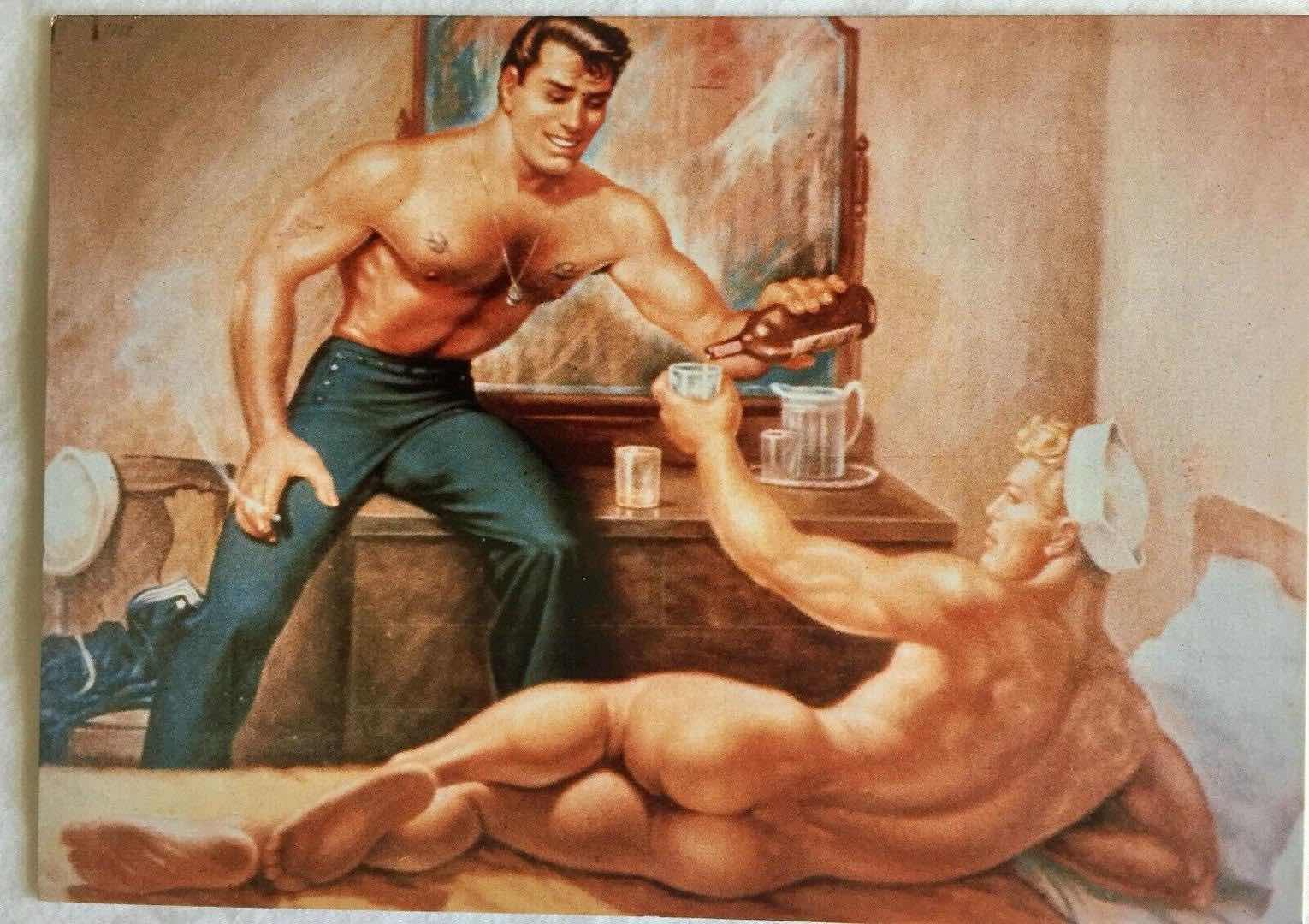 |
Untitled, by Tom of Finland |
In the pantheon of queer visual culture, few images are as iconic—or as unapologetically homoerotic—as the bulging, leather-clad figures drawn by Tom of Finland. With their impossibly broad shoulders, exaggerated musculature, and conspicuous bulges, these hypermasculine men were more than just fantasy: they were acts of artistic rebellion, crafted at a time when queer desire had to be hidden in the shadows. But Tom of Finland (born Touko Laaksonen) was not alone in reshaping how gay masculinity was imagined and celebrated in visual art. He belonged to a wider aesthetic tradition that blurred the lines between eroticism, protest, and artistic expression.
 |
| Untitled, by Tom of Finland |
Tom of Finland began publishing his drawings in the 1950s, first in American beefcake magazines under pseudonyms before gaining cult status within underground gay circles. His men were not just naked—they were powerfully naked. Whether sailors, bikers, cowboys, or police officers, these figures projected confidence, dominance, and sexual agency. This was a deliberate rejection of earlier depictions of gay men in visual media, which often painted them as effeminate, sickly, or criminal.
 |
| Untitled, by Tom of Finland |
Rather than conform to heteronormative expectations, Tom exaggerated the masculine archetype to subvert it. Muscles were drawn just shy of absurdity. Genitalia, while rarely fully exposed in early works due to censorship, were always implied to be monumental. Clothing—tight jeans, uniforms, leather—clung to bodies with sculptural precision. In this world, queerness was not weak or shameful, but fiercely virile.
 |
| Rainbow Falls, by George Quaintance |
Tom of Finland was not the first to explore the muscular male form as an object of desire, though he certainly popularized it within queer culture. Earlier artists such as George Quaintance—whose idyllic, soft-lit scenes of sun-kissed ranch hands and swimmers in the 1940s and '50s also blended classical idealism with homoerotic themes—helped lay the groundwork. Quaintance's men were more polished and posed, evoking Greco-Roman statuary, but they shared with Tom a fascination with male beauty and strength.
 |
Havasu Creek, George Quaintance |
 |
Morning in the Desert, George Quaintance |
Others in this lineage include Etienne (Dom Orejudos), known for his bondage-tinged illustrations, and more contemporary artists like Robert Mapplethorpe, whose photographic studies of the male body in the 1970s and '80s, gave fine art legitimacy to explicitly sexual gay imagery. These artists collectively expanded the visual vocabulary of masculinity—and queer masculinity in particular—by daring to eroticize it on its own terms.
 |
| Untitled, by Etienne (Dom Orejudos) |
 |
| Untitled, by Etienne (Dom Orejudos) |
 |
| Untitled, by Etienne (Dom Orejudos) |
The hypermasculine male nude was, and still is, more than just visual titillation. For many gay men—especially those emerging from the post-WWII era through the gay liberation movement of the 1970s—these images were lifelines. In a world that demonized or erased queer identities, these artworks created an imaginative space of strength, desire, and belonging.
 |
Dan S., 1980, by Robert Mapplethorpe |
Tom of Finland's drawings inspired a sense of pride at a time when few public role models existed. His men weren’t victims or martyrs—they were in control. They gazed back at the viewer with a smirk, not shame. Leather culture, which Tom helped popularize, became a defiant and communal expression of this ethos, evolving into an entire subculture with its own codes, rituals, and aesthetics.  |
| Untitled, by Tom of Finland |
Today, the hypermasculine aesthetic pioneered by Tom of Finland and his artistic descendants is both celebrated and interrogated. On one hand, his work has been embraced by museums and collectors, with the Tom of Finland Foundation preserving his legacy as both art and activism. On the other hand, critics have raised important questions about body ideals, race, and inclusivity within this visual tradition. |
Shore Leave, George Quaintance |
Nonetheless, Tom’s work endures because it dared to imagine a world where gay men could be powerful, erotic, and unashamed—all at once. For those who still find strength in the curvature of a flexed bicep, the gleam of a leather cap, or the tilt of a winking smile, these images remain potent reminders that desire can be both beautiful and bold.
_________________________________________________
About the Artist: Tom of Finland (Touko Laaksonen, 1920–1991)
Born in Finland, Touko Laaksonen served in the Finnish Army during World War II before working as a graphic designer. His first drawing was published in Physique Pictorial in 1957. Over his lifetime, he created thousands of images that celebrated queer desire with explicit muscular masculinity. In 1984, he co-founded the Tom of Finland Foundation in Los Angeles to preserve and promote erotic art. His legacy continues to influence fashion, photography, and LGBTQ+ visual culture globally.
 |
| Untitled, by Tom of Finland |
While this last one might be Untitled, I think the message is clear, "Fuck the World." This image is not merely erotic; it is symbolic. The man doesn’t hide; he dominates the universe with sensual confidence. In a time when queer lives were marginalized and criminalized, Tom of Finland dared to draw a world where desire could orbit freely—where the weight of the world was no burden, but a thing to be held with love and strength.
Boeing a lover of the erotica art work of Tom of Finland and other ms I appreciate this post today. It interest how art can do so much more to express and show how a community truly vs other media. Thanks
ReplyDeleteDo these kinds of images, and perhaps Hentai or gay anime, arouse you?
ReplyDeleteActually, they don't. It's just a part of gay art history. I find more classical realism more arousing. I also think that photography has a lot of eroticisms in it, and it doesn't hav ego be pornographic, just well done.
DeleteCan we please retire the overused and undefined "hypermasculine". As a concept it's so capacious as to be meaningless.
ReplyDeleteWhat about Hentai in gay art history? Similar exaggeration of body features. Strong sexual element. Asian roots.
ReplyDeleteI'll see if I can put together a post about Hentai. I'll have to read up on it.
DeleteMe ha gustado mucho este artículo sobre el arte queer.
ReplyDeleteÁngel